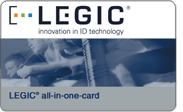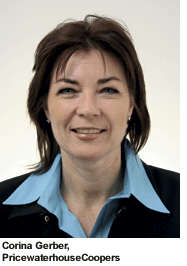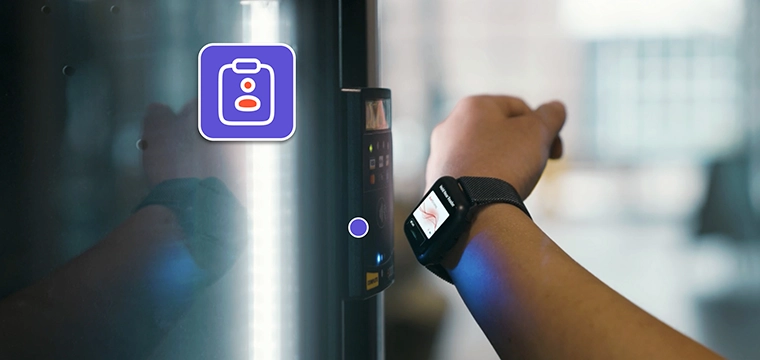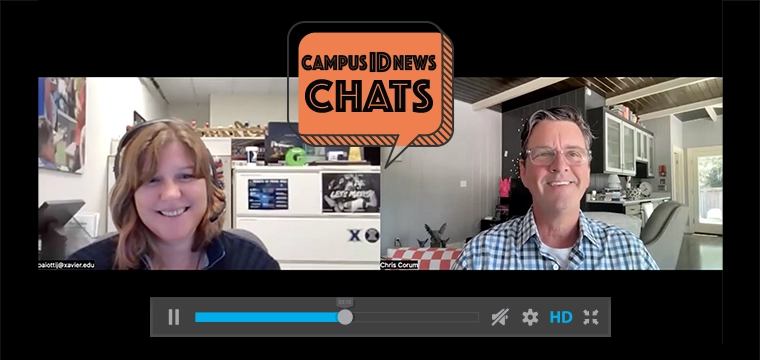 By Andy Williams, Contributing Editor
By Andy Williams, Contributing Editor
When PricewaterhouseCoopers went from 13 different buildings down to one at its Zurich, Switzerland office, many of its 1,200 employees were using different ID cards providing only limited uses. So why not switch to one multi-function card?
That’s what the company went searching for. “We’ve always tried to look for state-of-the art systems and we found this card,” explains Corina Gerber, facility management, senior manager, for PricewaterhouseCoopers Switzerland (PwC).
This card Ms. Gerber refers to contains a chip manufactured by fellow Switzerland-based LEGIC Identsystems that handles everything the company needs with room for expansion.
 Called an “all-in-one” card, it’s not new. Actually, it has been around about 10 years, said Bob Fee, general manager, Business Unit, for LEGIC in North America. But with the demand for more applications on one card, a multi-function type card is starting to come into its own.
Called an “all-in-one” card, it’s not new. Actually, it has been around about 10 years, said Bob Fee, general manager, Business Unit, for LEGIC in North America. But with the demand for more applications on one card, a multi-function type card is starting to come into its own.
PwC’s applications include building access, print management, an e-purse for cafeteria usage, garage and elevator access, and more, said Ms. Gerber.
For the time being just the Zurich office has the new card. “We moved into the new building about a year ago. Before that we had 13 different buildings. Just from a logistics (point of view) it was not working out correctly. We all moved under one roof in November, 2005 and had to design our own solutions for our cards,” said Ms. Gerber.
Secure document management provides a key application
PwC is a professional services firm best known for its auditing and accounting capabilities. One of the biggest demands the company had for its card is what Ms. Gerber calls “follow me” or “follow&secure” printing. Obviously a company dealing with tax returns and other sensitive data doesn’t want documents spit out by one of the company’s 60-plus multi-function printers/faxes/scanners just lying around until the person who sent the documents to the printer shows up to claim them.
“Secure means you have to physically go to the machine and, using your badge, release your documents,” said Ms. Gerber. “You always have things you don’t want lying around. You have the whole Human Resources department that prints out things such as salary schedules. This was one functionality we needed.”
With “follow&secure”, the job is sent to the printer, but it’s not printed until the document’s owner shows up at one of the company printers and flashes his card to the machine. That unlocks the printer and the job, which has been stored in a queue. Once the printing is finished, the person puts in his card again, which locks the printer.
The “follow” aspect of the solution is that the print job can follow wherever you happen to be.
“We have about 62 machines in the building and I can use any of these machines. I have my office on the first floor and I may have meeting on the fifth floor. That makes it very convenient. I don’t have to go to a particular printer. I can use the one on the fifth floor,” said Ms. Gerber.
“It’s also, a cost factor,” she added. “We used to have printers and copying machines. Printers aren’t that expensive but maintenance of copiers can be quite high. With the multi-function devices, costs are quite lower. We can print, scan, copy, and fax. Scanning is really great. You go there with your badge and once the device knows it is you, you put in the papers to be scanned and within one minute it’s in your mailbox.”
Access control via contactless and biometrics
Physical access control is another key component of the card. During normal business hours, only the employee’s ID badge is needed to gain access. “But after hours and on weekends, we go to biometrics,” specifically a fingerprint, said Ms. Gerber. The fingerprint template, added Mr. Fee, is stored on the 1 kb contactless chip.
 Employees have to use a separate entrance in this case, where they have to produce both their badge and their finger. They then enter through a turnstile-like door that allows just one person in at a time. That, of course, prevents one employee from letting in several others with his badge and fingerprint.
Employees have to use a separate entrance in this case, where they have to produce both their badge and their finger. They then enter through a turnstile-like door that allows just one person in at a time. That, of course, prevents one employee from letting in several others with his badge and fingerprint.
Nothing’s perfect, however, so PwC also has 24-hour security in place as well, she said.
“When biometrics was first introduced, we thought maybe employees wouldn’t want to give us their fingerprint. But it’s just to gain access and it only covers five points. It’s not like the fingerprints police take. It’s the lowest type of fingerprint,” she added. “So nearly all of our employees gave us their fingerprint.”
The smoothness of the transition to the new system was brought about by “all the communication we did with our employees before we moved into the new building. We showed them what we intended to do with biometrics and how it works and how the multifunction devices would work,” she said.
PwC has offices in 149 countries; and some 140,000 employees. “In Switzerland, we have about 2,500 employees in 14 offices and 1,200 employees at the Zurich office,” she said.
Different vendors, different applications, but a single card …
“What we’re trying to make people understand,” said Mr. Fee, “is that different applications from different vendors doing different things can be stored on the card and be totally independent of each other. We have 50,000 customers. About half of them use more than just one application, usually two or three on average,” he added. The applications, like PwC, include access control, cashless payment, time and attendance, and the follow and secure print concept.
“About five Legic partners offer the ‘follow me print’ application. This particular application is being sought after more and more,” he said.
What PwC is utilizing on its all-in-one card is just the tip of the iceberg. German automaker BMW, serviced by LEGIC, “has 17 applications on their ID card. Airbus has 12,” said Mr. Fee. “They’re actually saving money because they’re using one card and it gives them more flexibility.”
The 13.56 frequency LEGIC contactless smart card uses encryption in the transmission. Data from the different vendors are encrypted from reader to the card and also on the card itself. “It provides a higher level of security. If a person loses the card there is nothing that can be accessed,” said Mr. Fee.
In fact, added Ms. Gerber, anyone finding a lost card won’t even know that it’s from PwC. There is a separate company name (Interlock) on the back of the card, and a telephone number. People can use that as a means of returning the card.
“We chose the name of the company which makes the card,” she added. “It’s a card maker here in Switzerland that we use.” When the card is lost, she said, it’s locked out of the system, but the money in the e-purse portion of the card is gone. Employees can load about 100 Swiss francs on the card that is usable in the company’s cafeterias or vending machines.
Originally, PwC had an ID card with no functions on it. “It was just a card that showed you were working at PricewaterhouseCoopers,” said Ms. Gerber.
While the Zurich office was the first with this type of card, other PwC offices are starting to come on line. “Geneva is starting up with the multi-function machines. We have to provide a card so an employee in Geneva, when he comes to the Zurich office, can still use the same card. Geneva is the first that has started doing this, but we’re working slowly with other (PwC) locations,” she said.
However, these cards carry only building access capabilities and aren’t yet all-in-one cards, she added.
From Zurich to the PwC world?
Ms. Gerber estimates that each card produced by PwC costs about 10 Swiss francs, but that includes the cost of the machine as well. “We produce our own cards for obvious security reasons,” she added.
Added Mr. Fee about the all-in-one card installation: “We relied on our partner network who did the installation and integration. We acted as a consultant and helped them understand how best to use the technology. We provided the oversight, the RF module and the transponder.”
He cited the PwC installation as “an excellent example of how an organization can utilize an all-in-one card. It reduces costs, increases security and gives them the flexibility to do more down the road … to use technology to enhance the organization. They can easily add or remove applications a year from now or five years from now. We’ve had customers using the technology for the last 15 years. It’s very secure and very flexible.”




